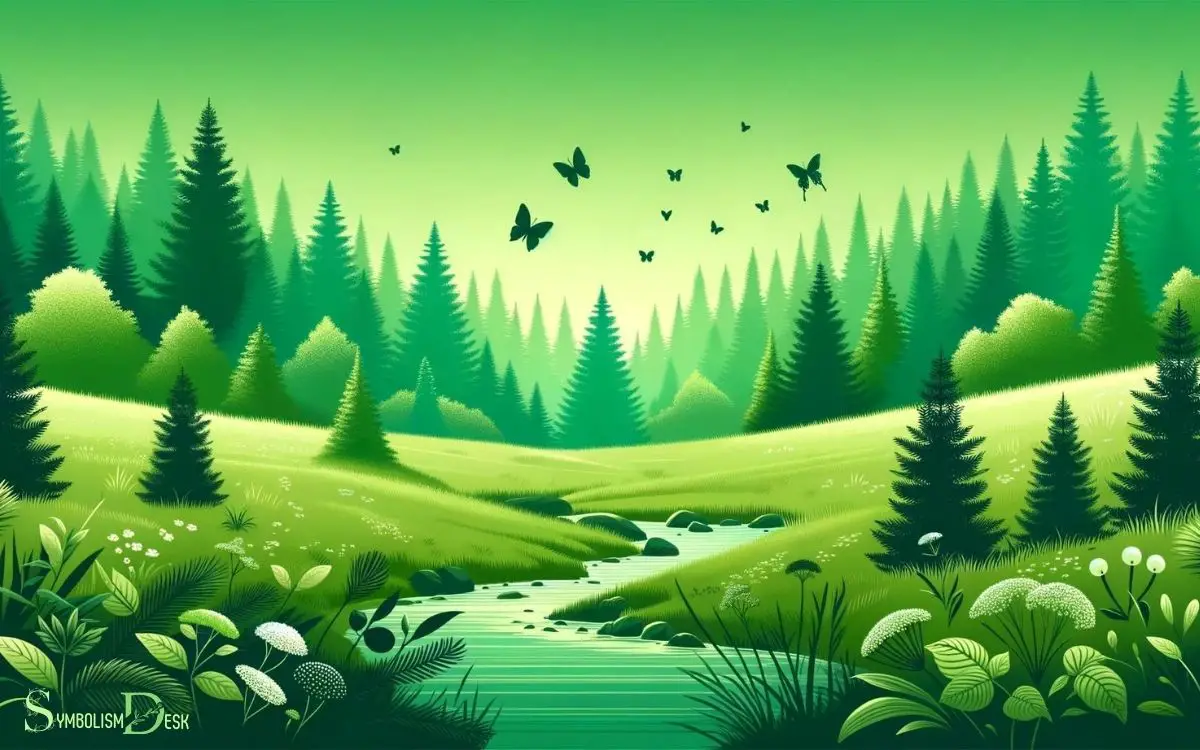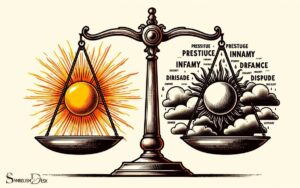What Is the Symbolic Meaning of Green? Growth!
Green is a color deeply imbued with symbolic meaning, often associated with nature, growth, renewal, and health.
In various cultures, green represents fertility, prosperity, and even luck. It’s also tied to feelings of safety and stability, as well as being a symbol for environmental awareness and sustainability.
The symbolic meaning of green is diverse and includes:
- Nature and Growth: Green is the color of grass, trees, and foliage, and hence symbolizes life, growth, and nature’s abundance.
- Renewal and Rebirth: With the arrival of spring, green leaves emerge, making it a symbol of new beginnings and rejuvenation.
- Health and Vitality: Hospitals often use green because it’s calming and restorative, symbolizing health and well-being.
- Fertility and Prosperity: In some cultures, green is a sign of fertility and prosperity due to its connection with bountiful harvests.
- Luck: In Irish culture, green is considered lucky, connected to leprechauns and shamrocks.
- Environmentalism: Green is the international color of the environmental movement, representing a commitment to ecological balance.
For example, a green traffic light signals ‘go’ or safety, which is indicative of green’s universal association with the idea of permission or safety.
Green’s symbolism spans from the tranquility of forest canopies to the vigor of sprouting seeds, encapsulating a world of meanings.

Key Takeaway
Historical and Cultural Symbolism
Green has held significant symbolic meaning throughout history and across various cultures. In ancient Egypt, it was associated with rebirth and the afterlife, often used in art and jewelry to represent fertility and new beginnings.
In Islamic culture, green is considered the color of paradise, while in Japan, it symbolizes eternal life.
The color also holds significance in Western culture, representing nature, growth, and hope. From the lush green fields of Ireland to the green of St. Patrick’s Day, it has become a symbol of national pride.
Transitioning from historical and cultural symbolism to psychological and emotional associations, it’s important to understand how green impacts individuals on a deeper level.
Psychological and Emotional Associations
Associated with feelings of calmness and tranquility, green is known to evoke a sense of balance and harmony in individuals’ psychological and emotional states. This color is often associated with nature, representing growth, renewal, and stability.
Psychologically, green is believed to have a soothing effect, promoting relaxation and reducing anxiety. It’s also linked to feelings of hope, safety, and security, which can have a positive impact on mood and overall well-being.
Emotionally, green is often associated with a sense of freshness and vitality, encouraging a sense of rejuvenation and optimism.
Additionally, green is thought to foster a connection to the environment, promoting feelings of peace and connection to the natural world.
Environmental and Natural Significance
The environmental and natural significance of green is evident in its close association with the lushness and vitality of plant life, conveying a sense of renewal and interconnectedness with the Earth.
Green symbolizes the harmony between humanity and nature, representing the importance of preserving and protecting the environment. It serves as a reminder of the Earth’s natural beauty and the necessity of conservation.
The color green also signifies growth, abundance, and fertility, reflecting the cycle of life and the interconnectedness of all living things. Its presence in nature instills a sense of calm and balance, promoting overall well-being.
Green landscapes are often perceived as soothing and refreshing, offering a sanctuary from the stresses of modern life. This symbolic connection to nature encourages a greater appreciation for the environment and a commitment to sustainable living.
Symbolism in Religion and Spirituality
In religious and spiritual contexts, green holds significance as a symbol of renewal and divine connection. The color green is often associated with rebirth, growth, and the cycle of life in many religious traditions.
In Christianity, green symbolizes hope, eternal life, and the resurrection of Jesus Christ. In Islam, green is considered the color of paradise and is often used in religious decorations.
Hinduism associates green with the heart chakra, representing love, harmony, and balance. In Buddhism, green is linked to balance, harmony, and the expanse of the mind.
Across various spiritual beliefs, green is seen as a representation of the natural world and the interconnectedness of all living beings. It signifies a deep connection to the earth and the divine, fostering a sense of spiritual renewal and growth.
How Does the Symbolic Meaning of Green Relate to Water Pollution and Scarcity?
The symbolic meaning of green in relation to water pollution and scarcity is significant. Green represents growth and renewal, but when applied to symbolic water problems meaning, it highlights the need for sustainable practices to combat pollution and scarcity. It emphasizes the urgency of addressing these critical environmental issues.
Modern Interpretations and Applications
While often associated with traditional symbolism, modern interpretations and applications of the color green have expanded to encompass a wide range of meanings and uses.
In contemporary contexts, green is commonly linked to environmental awareness, sustainability, and the promotion of eco-friendly practices.
It symbolizes growth, renewal, and harmony with nature, reflecting society’s increasing focus on environmental issues and the importance of preserving the planet.
It’s also used in marketing to convey health, wellness, and organic products. Additionally, green has found its way into technology, where it represents energy efficiency and innovation.
In interior design, it’s often used to evoke a sense of tranquility and balance.
Conclusion
The symbolic meaning of green spans across history, culture, psychology, environment, and spirituality, making it a versatile and multi-faceted color.
From representing growth, harmony, and balance to being associated with jealousy, money, and nature, green holds a spectrum of meanings. The color green can also symbolize new beginnings and renewal, as seen in the springtime when nature begins to bloom and thrive. Additionally, green is often linked to environmentalism and the push for sustainable practices, especially in the face of global water problems. The urgency of addressing global water problems has led to a deeper appreciation and understanding of the color green, as it embodies the need to preserve and protect the earth’s natural resources.
It’s no wonder that it continues to be a dominant color in our world today, from traffic lights to eco-friendly products.
So go ahead, embrace the green and let its symbolism color your world.






